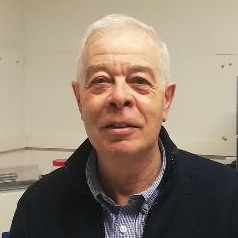Flavonoids: From Structure to Health Issues
A special issue of Molecules (ISSN 1420-3049). This special issue belongs to the section "Natural Products Chemistry".
Deadline for manuscript submissions: closed (30 September 2016) | Viewed by 268798
Special Issue Editor
Interests: food; phenolic compounds; anthocyanins; flavonoids; metabolites; biological activity; health implication
Special Issues, Collections and Topics in MDPI journals
Special Issue Information
Dear Colleagues,
Flavonoids are one of the largest groups of plant secondary metabolites. They play relevant roles in plant ecology and plant physiology and are also widely distributed in the human diet, contributing to sensory, technological and health properties of plant-derived foods. Several thousand flavonoids have been identified in natural plant sources and their number increases when considering the flavonoid-derived products that can be formed during processing and storage of foodstuffs, and the metabolites produced in the human organism after their intake. Chemical nature, structural complexity, physicochemical behaviour and concentrations of flavonoids can notably differ among plant, food and biological matrices, making their analysis challenging. A variety of biological activities, such as antioxidant, anti-inflammatory, estrogenic, antimicrobial or antitumor abilities have been reported for flavonoids. However, most of those activities have been shown in vitro, whilst studies on their actual effects in the human body and the involved mechanisms of action are scarcer. Most flavonoids are little bioavailable and largely biotransformed in the organism. In these circumstances, the ability to detect, identify and determine metabolites is crucial to understand absorption, metabolism and biological effects of flavonoids. One difficulty that has prevented progress in that knowledge is the lack of commercial flavonoid metabolites, so that the development of processes for their convenient synthesis is needed in order to be used in activity and mechanistic studies, as well as to be employed as standards in the analysis of biological samples.
Main, but not exclusive, topics to be dealt with in this Special Issue are the following:
- current trends in the analysis of flavonoid and metabolites in plants, food and biological samples; advanced methodologies
- structural characterization and synthesis of new compounds
- implications in human health and validation of uses
- biological activities, bioavailability and mechanisms of action; novel approaches to their study
We would like to invite you to participate in this Special Issue on “Flavonoids: From Structure to Health Issues” by submitting a contribution in your field of expertise. Both original research papers and global or specialized critical reviews are welcome, although the subject matter of these must be previously agreed with us.
We hope you are interested in accepting this invitation, please send an e-mail by 15 April 2016 to the Molecules Editorial Office ([email protected]) indicating the type of contribution (research article or review) you wish to publish online, and a tentative title of your contribution, as well as its scope and coverage in the case of reviews, so as to prevent possible overlapping. The deadline for full manuscript submission is September 30th, 2016
Prof. Dr. Arturo San Feliciano
Prof. Dr. Celestino Santos-Buelga
Guest Editor
Manuscript Submission Information
Manuscripts should be submitted online at www.mdpi.com by registering and logging in to this website. Once you are registered, click here to go to the submission form. Manuscripts can be submitted until the deadline. All submissions that pass pre-check are peer-reviewed. Accepted papers will be published continuously in the journal (as soon as accepted) and will be listed together on the special issue website. Research articles, review articles as well as short communications are invited. For planned papers, a title and short abstract (about 100 words) can be sent to the Editorial Office for announcement on this website.
Submitted manuscripts should not have been published previously, nor be under consideration for publication elsewhere (except conference proceedings papers). All manuscripts are thoroughly refereed through a single-blind peer-review process. A guide for authors and other relevant information for submission of manuscripts is available on the Instructions for Authors page. Molecules is an international peer-reviewed open access semimonthly journal published by MDPI.
Please visit the Instructions for Authors page before submitting a manuscript. The Article Processing Charge (APC) for publication in this open access journal is 2700 CHF (Swiss Francs). Submitted papers should be well formatted and use good English. Authors may use MDPI's English editing service prior to publication or during author revisions.
Keywords
- new compounds
- natural metabolites
- flavonoid derivatives and analogues
- advanced analysis
- improved synthesis
- bioactivity
- bioavailability and pharmacokinetics
- mechanisms of action
- new methodologies and procedures
Related Special Issue
- Flavonoids: From Structure to Health Issues II in Molecules (10 articles)






